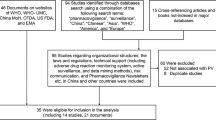Abstract
Objective
To assess the utilisation and development of the Zimbabwe Drug And Toxicology Information Service (DATIS)
Setting
The national drug and poisons information centre in Harare, Zimbabwe.
Method
A survey of records at the Zimbabwe national Drug and Toxicology Information Service (DaTIS) for the period January 1990 to December 1999 was conducted and compared to a previous review.
Main outcome measures
Average annual reporting rate, distribution of service users and report categories
Results
The mean (SD) reporting rate was 142.9 (81.6) p.a. with an increasing trend. Most contacts came from the capital city (67%). Pharmacists (40%) predominated in requests for drug information (DI), which comprised about three-quarters of reports, whereas toxicological enquiries mostly came from physicians (49%). Therapeutic categories mentioned most in DI reports were systemic anti-infective (24%) and nervous system agents (20.4%). Pesticides (28%) predominated in toxicology requests followed by pharmaceuticals (21%), largely nervous system (36%) and antiparasitic agents (23%).
Conclusion
Compared to the previous decade, use of DaTIS had not grown significantly due to perceived resource constraints, lack of local political and institutional support and divided loyalty of staff. The drug and poison information components serves two distinct user populations with separate needs. Development plans for both DaTIS and other drug information services in Africa need to be realistic taking into account the resource constraints and local political and institutional support.
Similar content being viewed by others
References
Anonymous Drug and therapeutics information. In: Quick JD, Hogerzeil HV, Rankin JR, Dukes MNG, Laing RO, Garnett A et al. (eds) Managing drug supply. 2nd Ed. Kumerian, Bloomfield, 1997; ISBN 1-56549-047-9
Pakenham-Walsh N, Eddleston M, Kaur M Developing world needs access to low cost pharmaceutical information from reliable sources. BMJ 1999; 319:1265
Joshi M Drug information service at teaching hospitals in developing countries. Ind J Pharmacol 1998; 30:1–5
Kasilo OJ, Nhachi CFB Recommendations for establishing a drug and toxicology information center in a developing country. Drug Intell Clin Pharm 1991; 25:1379–1383
Kasilo OJ, Froese EH A 10-year review of the teaching hospital-based national Drug and Toxicology Information Service in Zimbabwe. J Clin Pharm Ther 1989; 14:355–371
World Health Organization. About the ATC/DDD system. WHO Collaborating Centre for Drug Statistics Methodology, 2003. 21 Sept. 2005. http://www.whocc.no/atcddd/ (accessed 21 Sept. 2005)
Greater Glasgow Health Board. Greater Glasgow Health Board Area Medicines Information Centre Annual Report – 2000. http://www.show.scot.nhs.uk/gghbpharmacy/Area_ Specialists/druginfo/annual_2000.pdf (accessed 3 Oct. 2005)
Long Island Regional Poison and Drug Information Center The Long Island Regional Poison & Drug Information Center, Winthrop-University Hospital, 2003 Annual Report. http://www.lirpdic.org/2001%20Annual%20Report%20 Summary (Rev).html (accessed 3 Oct. 2005)
Tagwireyi D, Ball DE, Nhachi CFB Poisoning in Zimbabwe: a survey of 8 major referral hospitals. J Appl Toxicol 2002; 22:99–105
Society of Hospital Pharmacists of Australia. International register of drug information services. http://www.shpa.org. au/docs/druginfo_int.html. Feb. 2005. (accessed 3 Oct. 2005)
University of Cape Town. Medicines Information Centre. http://www.mic.uct.ac.za Oct. 2005 (accessed 3 Oct. 2005)
Acknowledgements
The authors would like to acknowledge the financial support which the Ministry of Health and Child Welfare and the Department of Pharmacy have provided over the years. The work of Prof. OMJ Kasilo in the operations of DaTIS during the period of this review is acknowledged as are the contributions of other pharmacists in the Department of␣Pharmacy who assisted with on-call duties. The assistance of Ms Sirira Tom in handling the administration of DaTIS and in data entry of records into the database is gratefully acknowledged.
Author information
Authors and Affiliations
Corresponding author
Rights and permissions
About this article
Cite this article
Ball, D.E., Tagwireyi, D. & Maponga, C.C. Drug information in Zimbabwe: 1990–1999. Pharm World Sci 29, 131–136 (2007). https://doi.org/10.1007/s11096-007-9110-6
Received:
Accepted:
Published:
Issue Date:
DOI: https://doi.org/10.1007/s11096-007-9110-6




